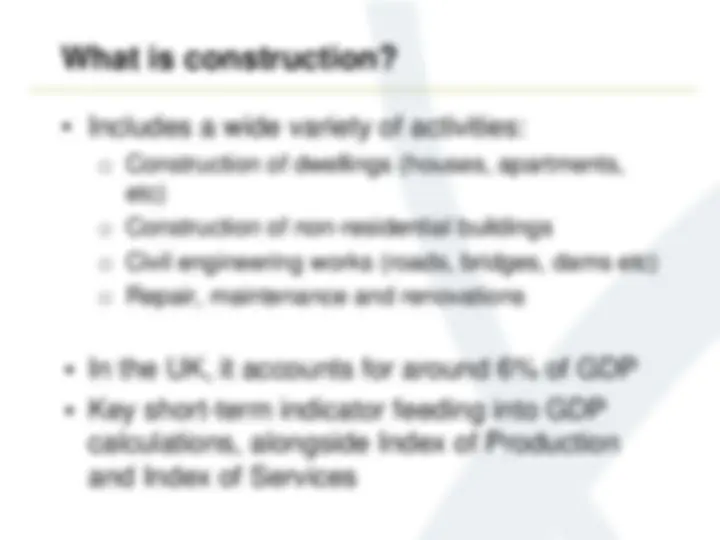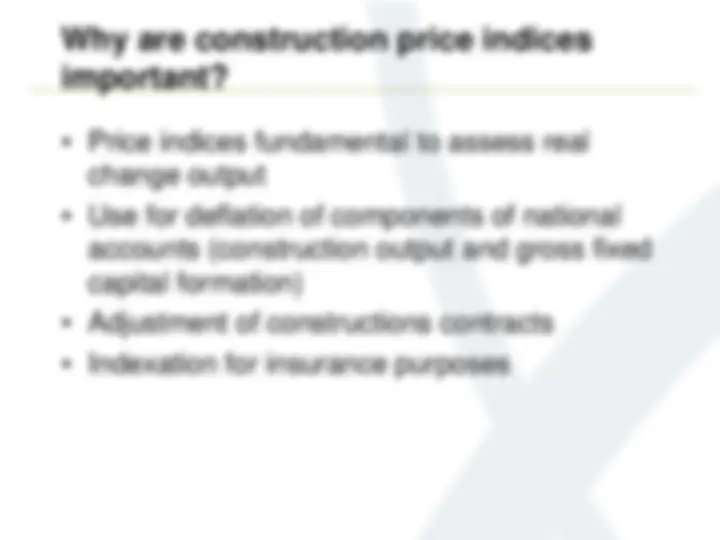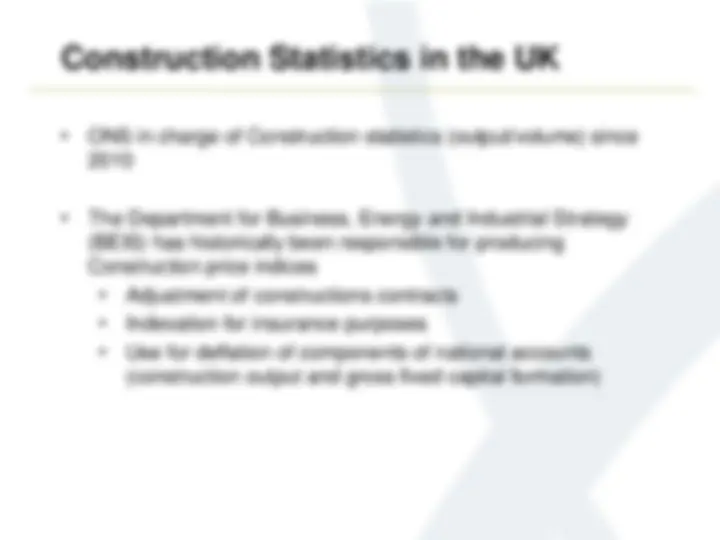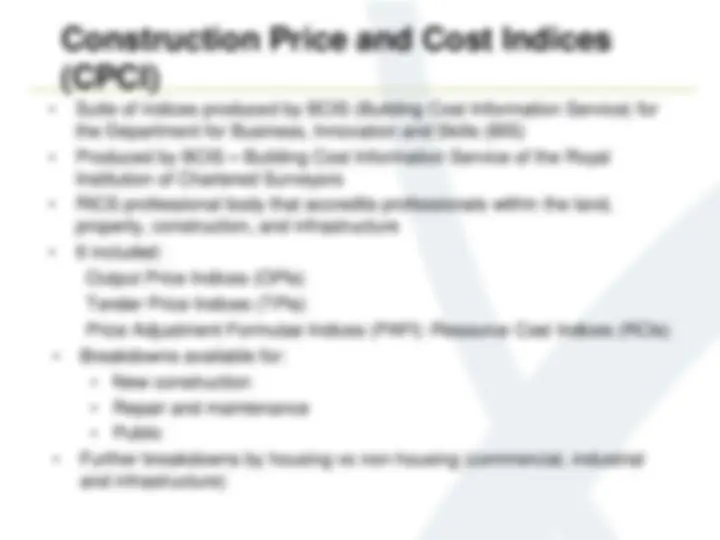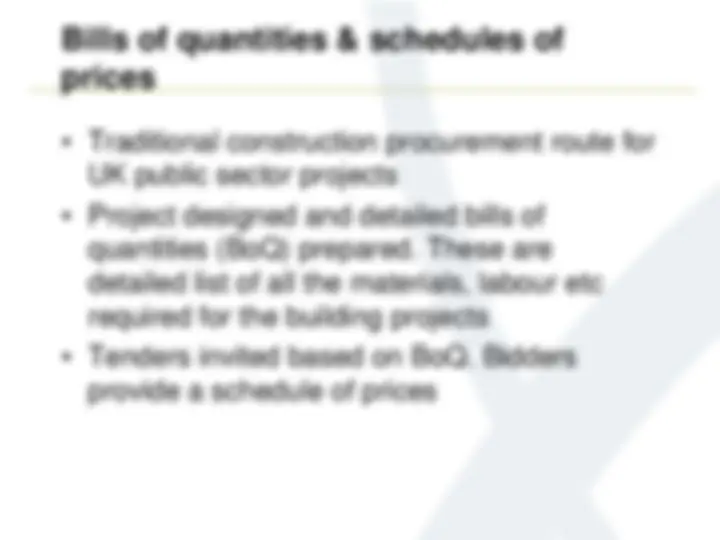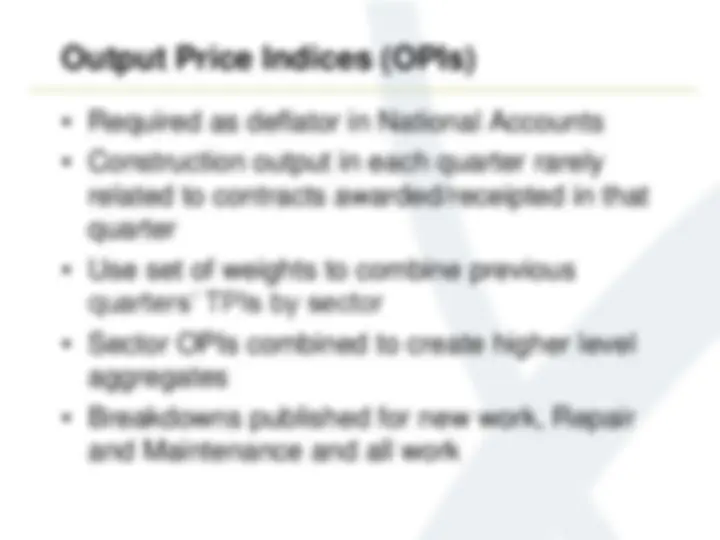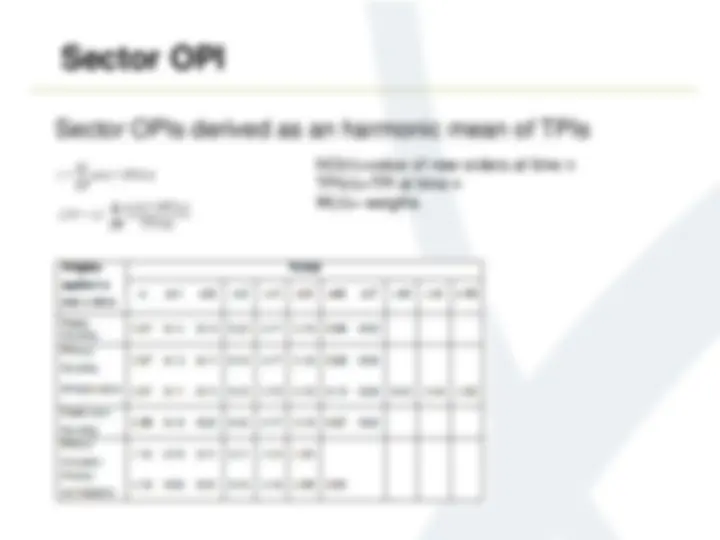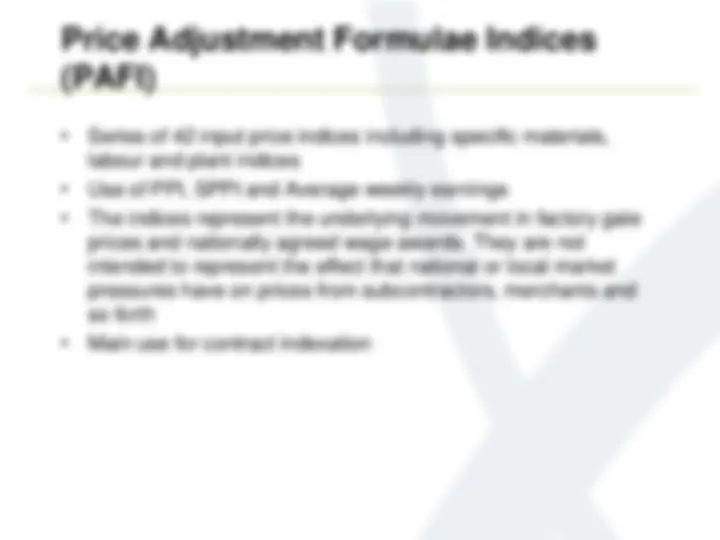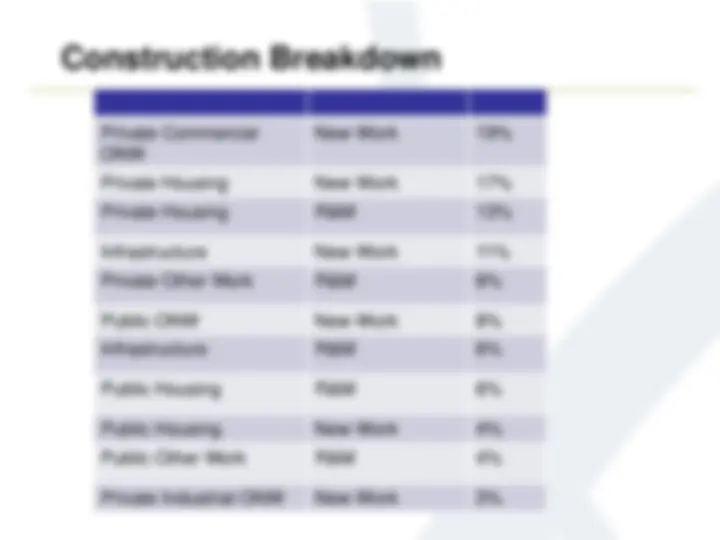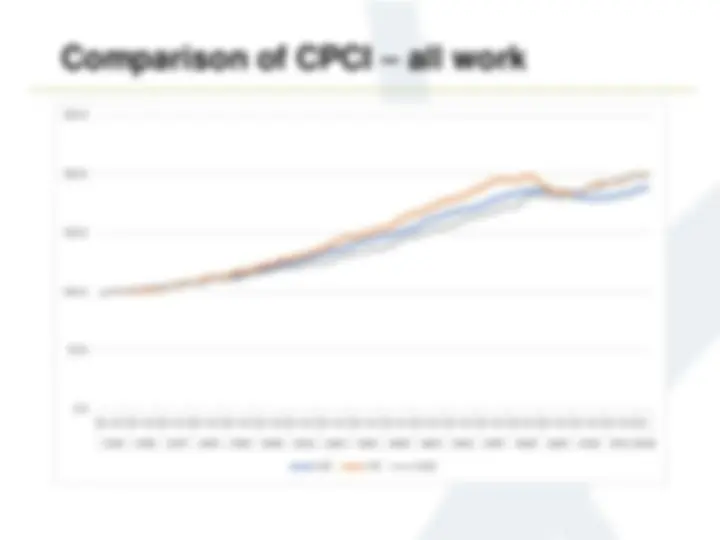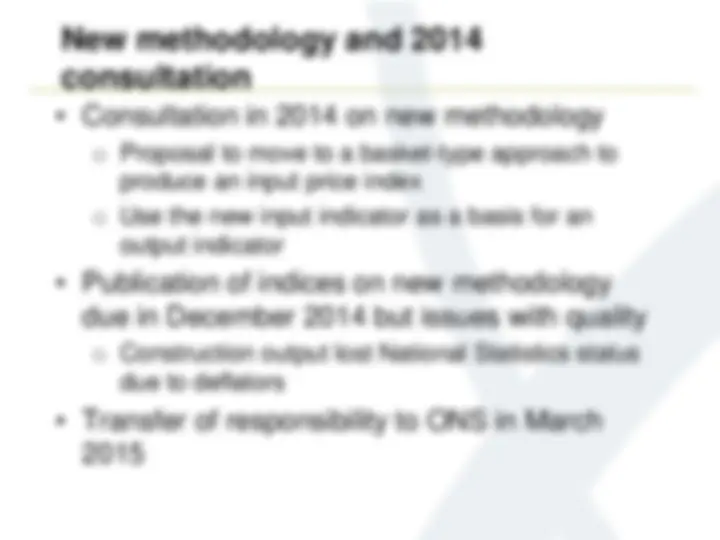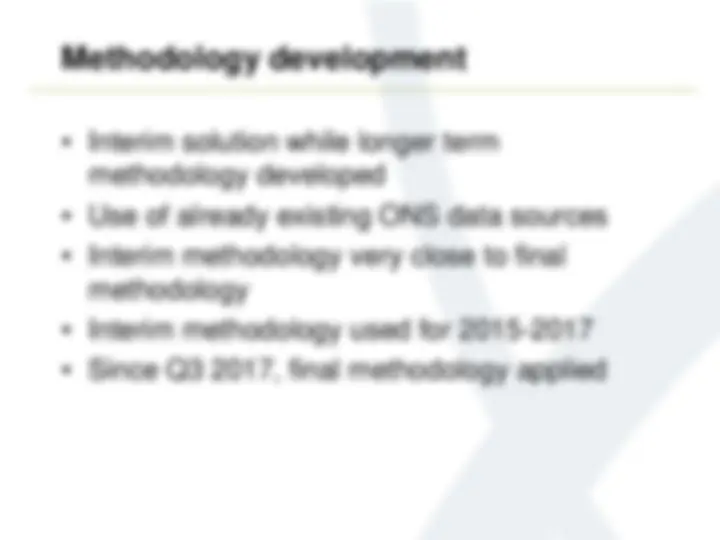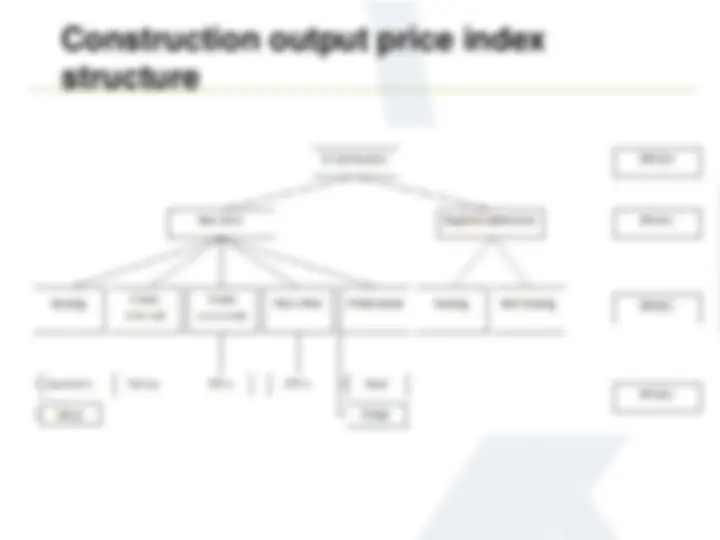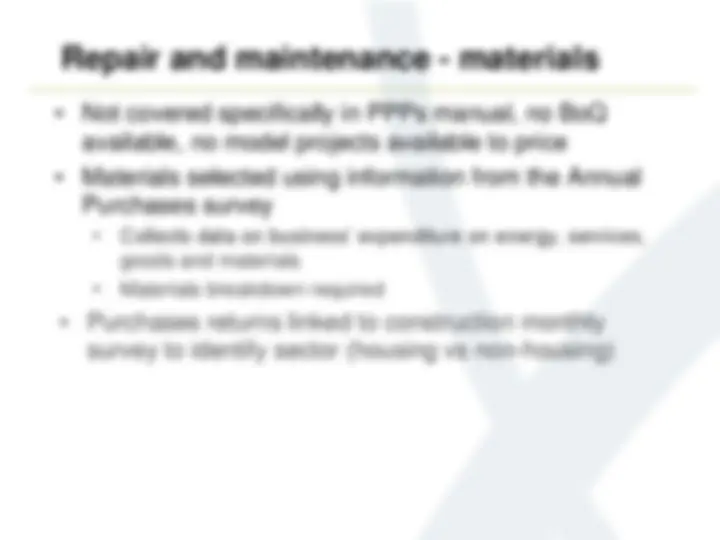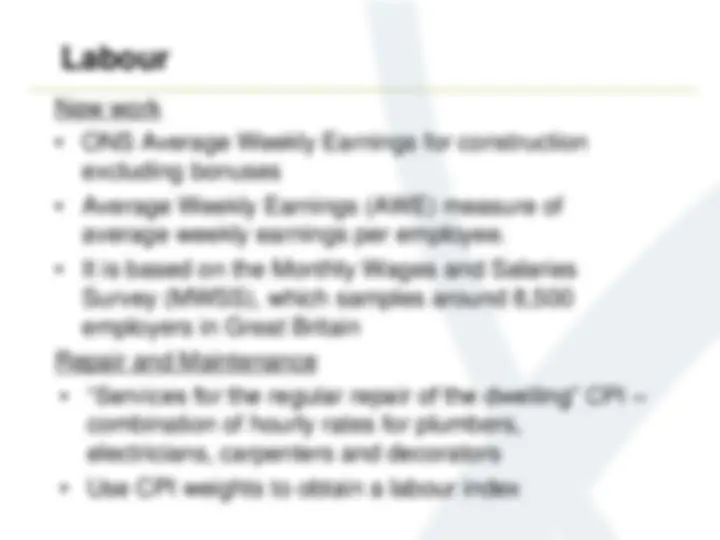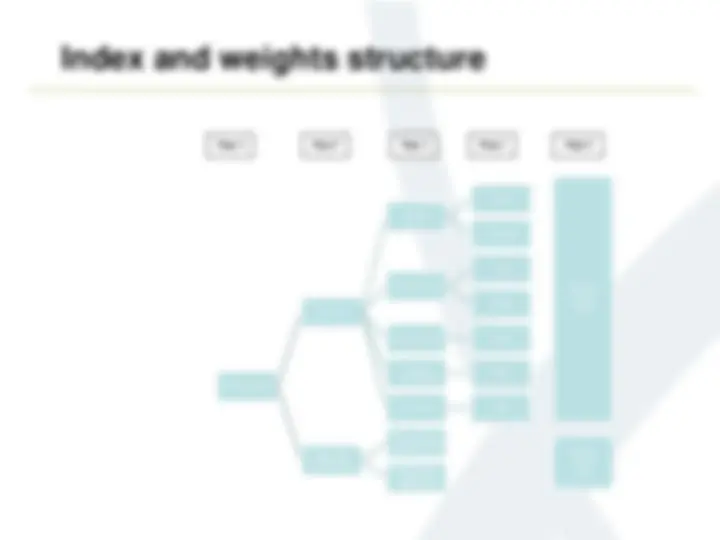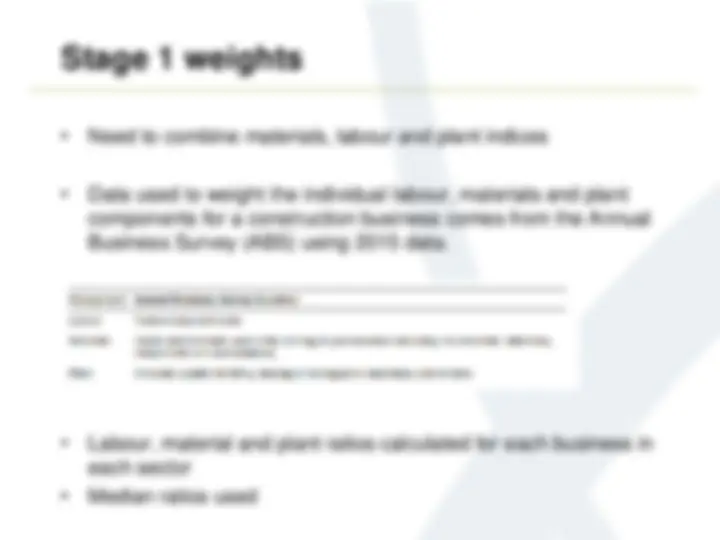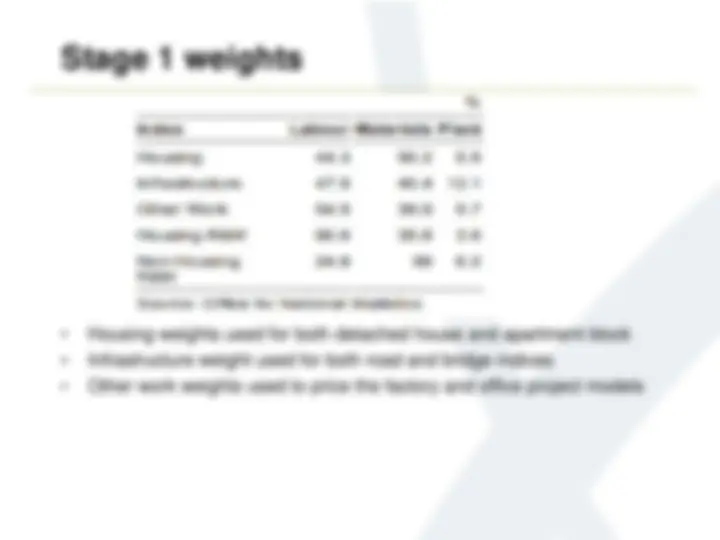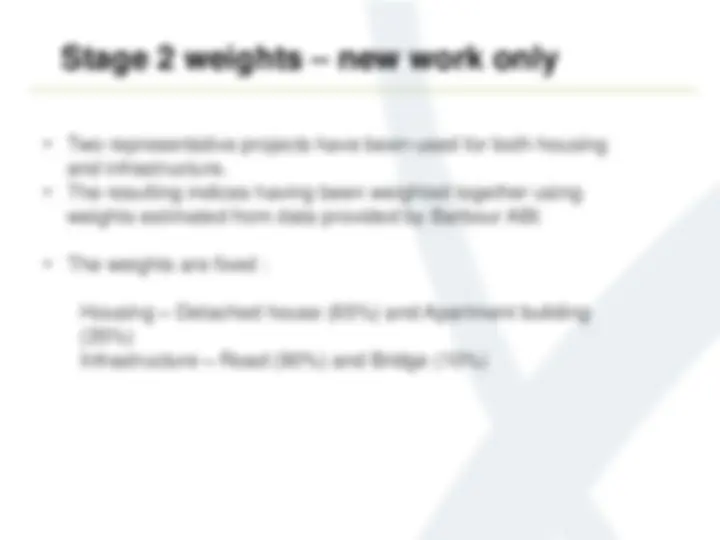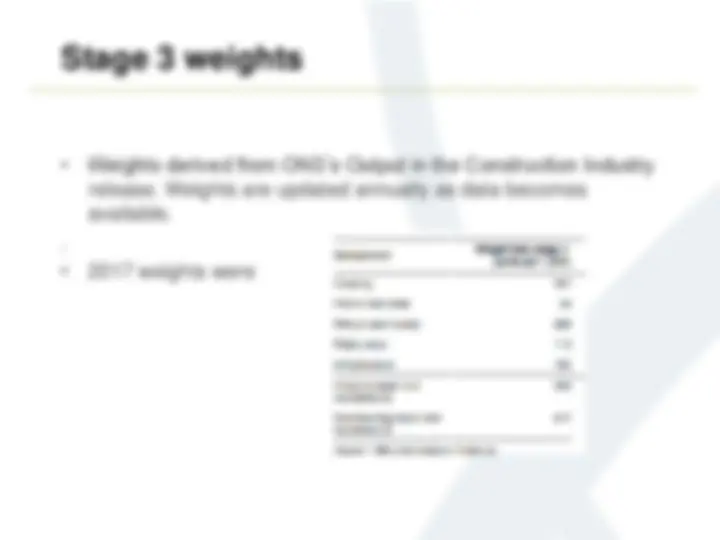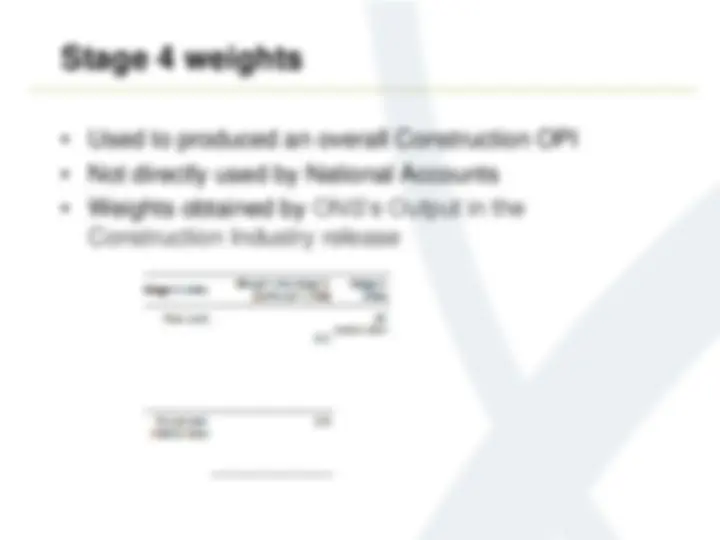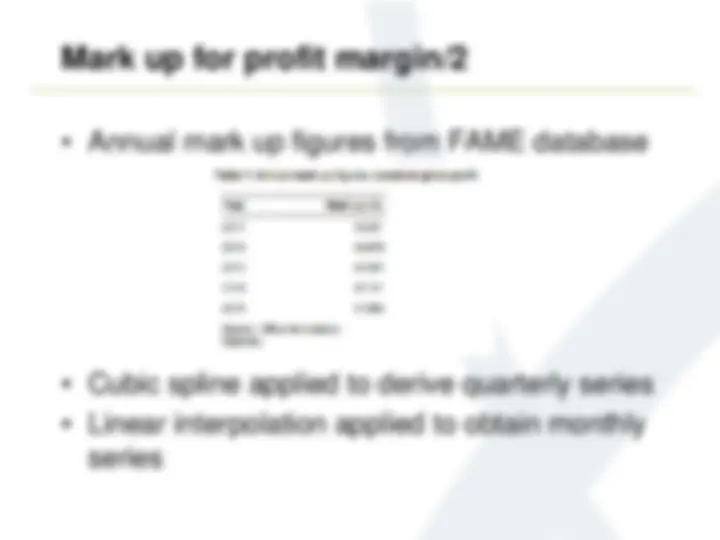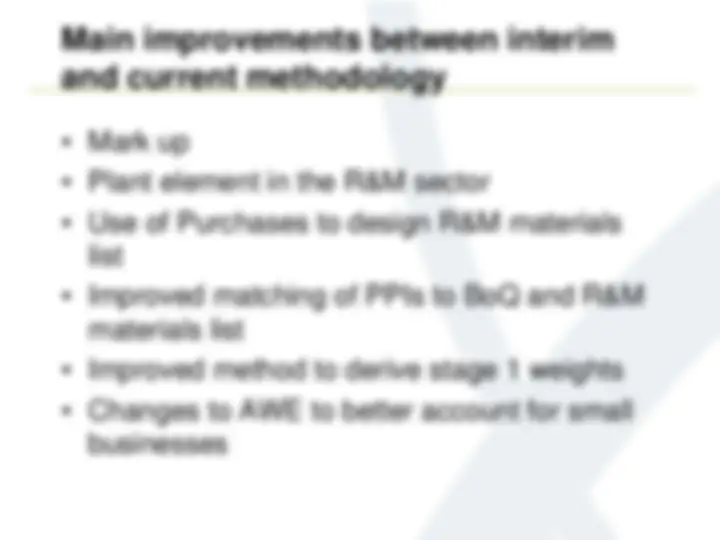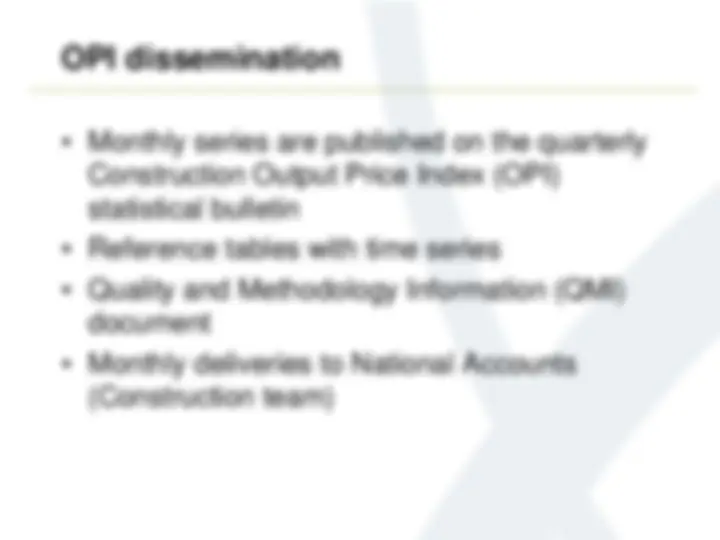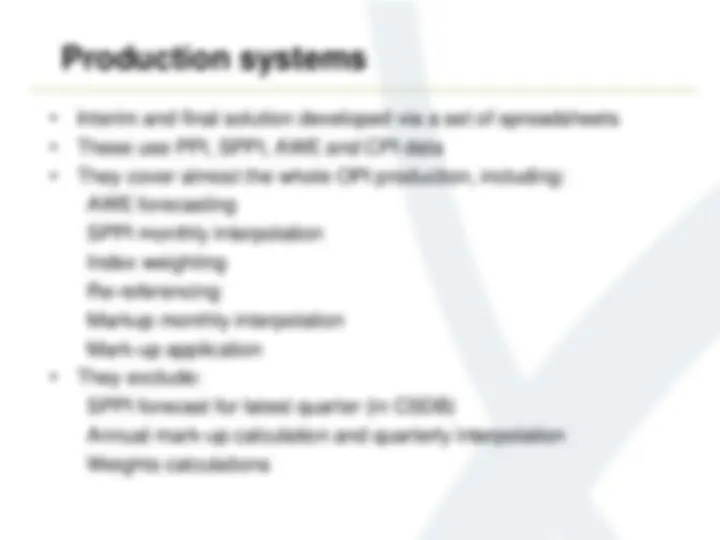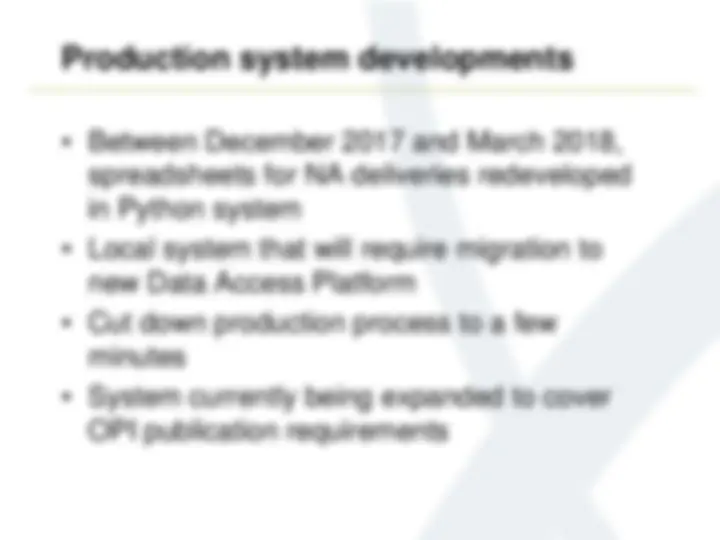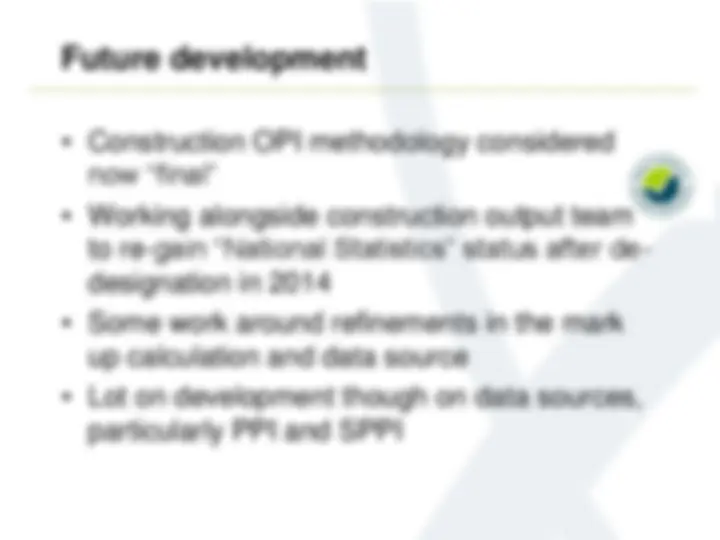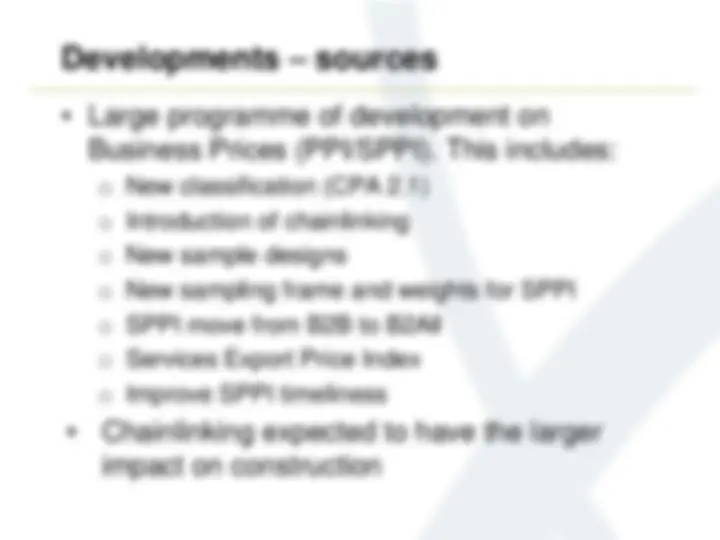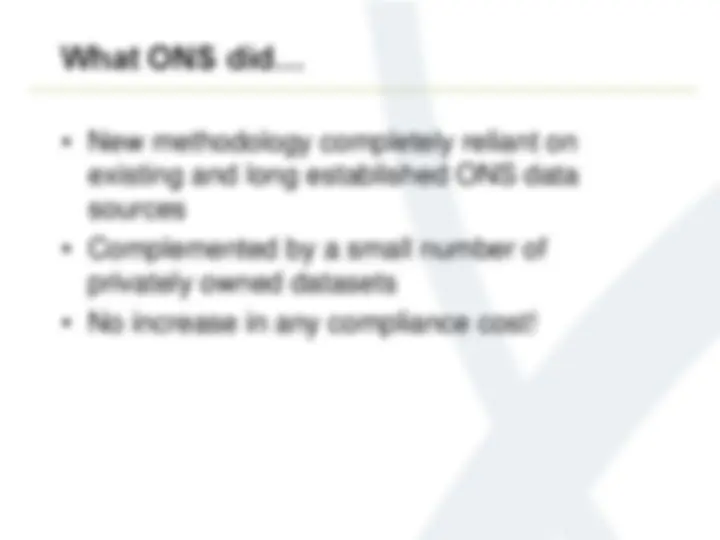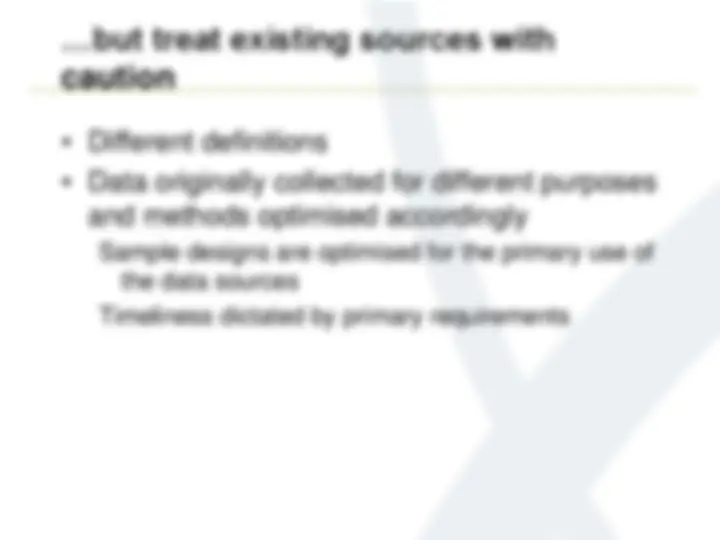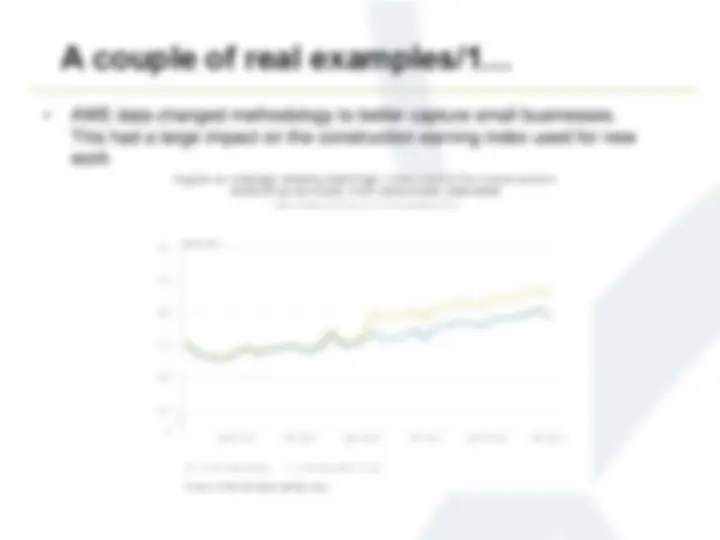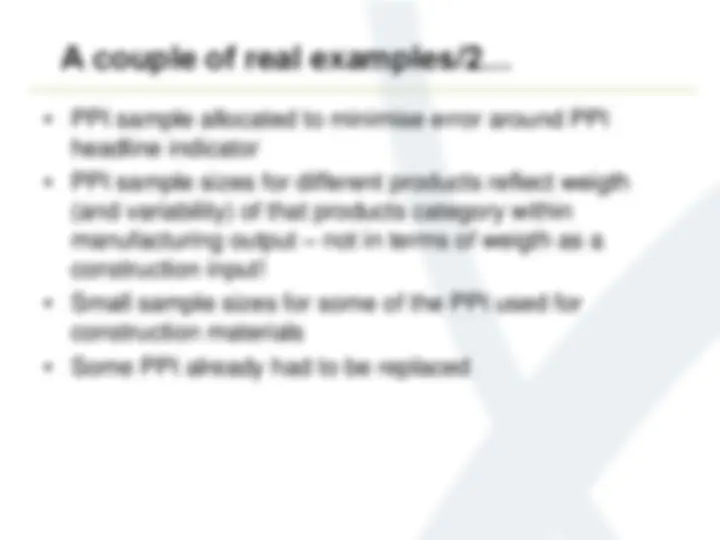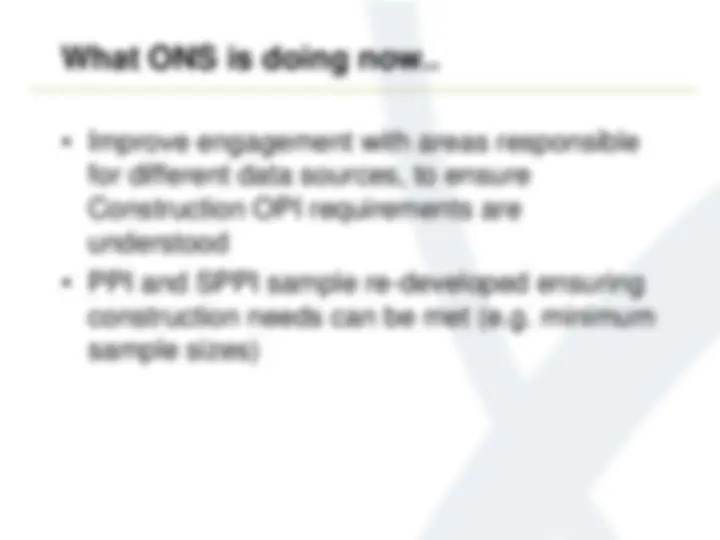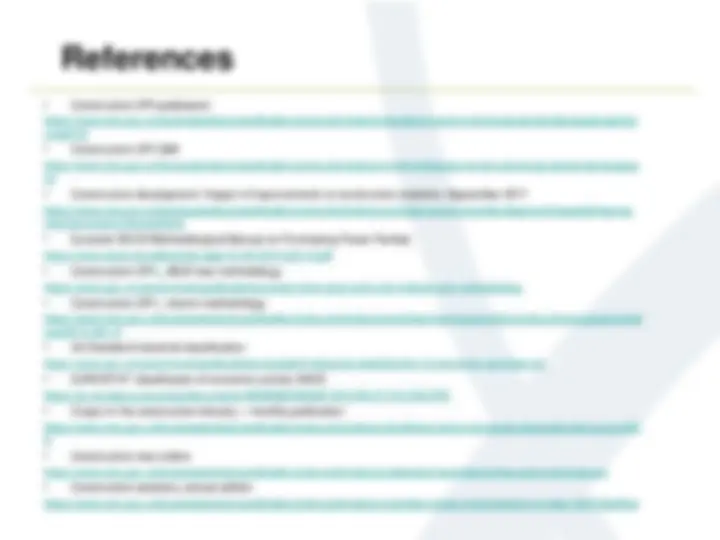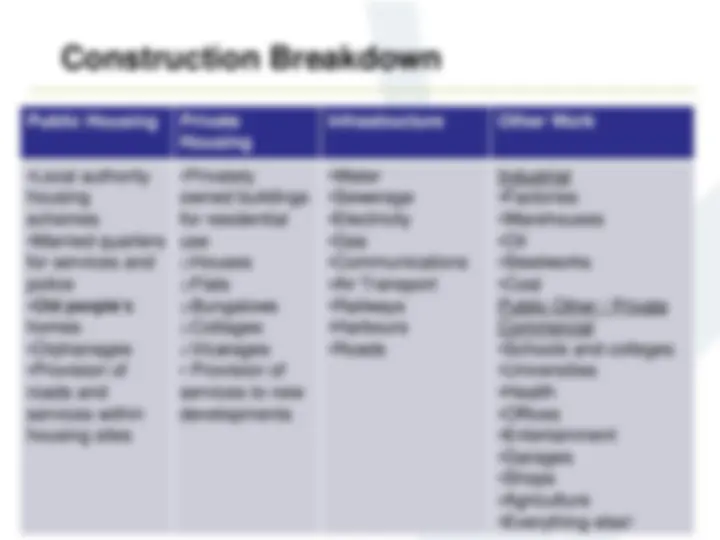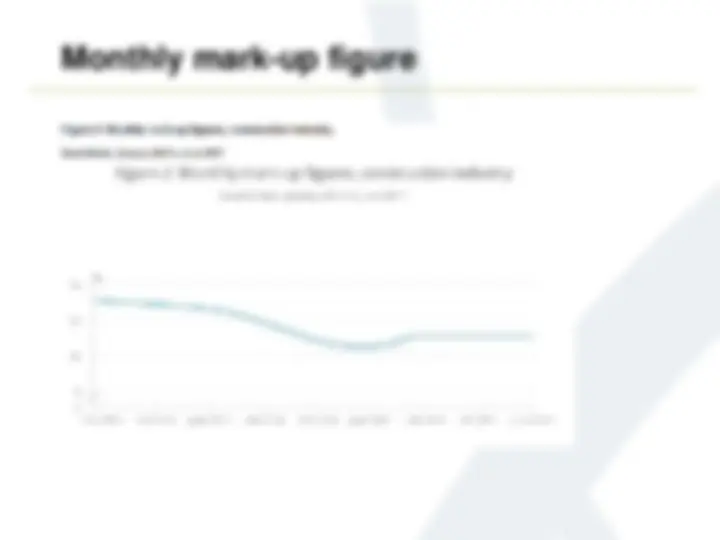Download UK Construction Price Indices: Importance, History, and Production and more Study notes Construction in PDF only on Docsity!
The UK’s Construction Price Indices
Experience and Perspectives.
Martina Portanti
Office for National Statistics, UK Business Prices Production team
Outline
- Background
- History of the UK Construction Price indices
- The new UK Construction Output Price Index:
- Methods
- Implementation
- Future developments
- Lessons learnt
What is construction?
- Includes a wide variety of activities: o Construction of dwellings (houses, apartments, etc) o Construction of non-residential buildings o Civil engineering works (roads, bridges, dams etc) o Repair, maintenance and renovations
- In the UK, it accounts for around 6% of GDP
- Key short-term indicator feeding into GDP calculations, alongside Index of Production and Index of Services
Why are construction price indices
important?
- Price indices fundamental to assess real change output
- Use for deflation of components of national accounts (construction output and gross fixed capital formation)
- Adjustment of constructions contracts
- Indexation for insurance purposes
History of the UK Construction Price
indices
Construction Statistics in the UK
- ONS in charge of Construction statistics (output/volume) since 2010
- The Department for Business, Energy and Industrial Strategy (BEIS) has historically been responsible for producing Construction price indices - Adjustment of constructions contracts - Indexation for insurance purposes - Use for deflation of components of national accounts (construction output and gross fixed capital formation)
Bills of quantities & schedules of
prices
- Traditional construction procurement route for UK public sector projects
- Project designed and detailed bills of quantities (BoQ) prepared. These are detailed list of all the materials, labour etc required for the building projects
- Tenders invited based on BoQ. Bidders provide a schedule of prices
PPP Bills of quantity - example
Output Price Indices (OPIs)
- Required as deflator in National Accounts
- Construction output in each quarter rarely related to contracts awarded/receipted in that quarter
- Use set of weights to combine previous quarters’ TPIs by sector
- Sector OPIs combined to create higher level aggregates
- Breakdowns published for new work, Repair and Maintenance and all work
Sector OPI
Sector OPIs derived as an harmonic mean of TPIs NO(n)=value of new orders at time n TPI(n)=TPI at time n W(n)= weigths
Resource Cost Indices (RCI)
- Weighted averages of PAFI indices
- Separate indices available for housing; non-housing; infrastructure; and repair and maintenance (housing and non- housing)
- Breakdowns by materials; labour; plant; electrical work; mechanical work and building work also available
- Main use for contract indexation
Issues
- CPCI been subject of a number of reviews over the last 10 years
- Langdon report in 2010 quote research by Yu and Ive: - Limited information on Mechanical and Electrical service items, often lumped together in BoQ - Use of base rates makes it difficult to capture new elements and proprietary items - BoQ procurement route diminishing in importance - Limited coverage of private sector housing and commercial
Comparison of CPCI – all work
- Include some comparison of the 3 indices?
Q1 Q3 Q1 Q3 Q1 Q3 Q1 Q3 Q1 Q3 Q1 Q3 Q1 Q3 Q1 Q3 Q1 Q3 Q1 Q3 Q1 Q3 Q1 Q3 Q1 Q3 Q1 Q3 Q1 Q3 Q1 Q3 Q1 Q3 Q 1995 1996 1997 1998 1999 2000 2001 2002 2003 2004 2005 2006 2007 2008 2009 2010 2011 2012 OPI TPI RCIS
New methodology and 2014
consultation
- Consultation in 2014 on new methodology o Proposal to move to a basket-type approach to produce an input price index o Use the new input indicator as a basis for an output indicator
- Publication of indices on new methodology due in December 2014 but issues with quality o Construction output lost National Statistics status due to deflators
- Transfer of responsibility to ONS in March 2015


